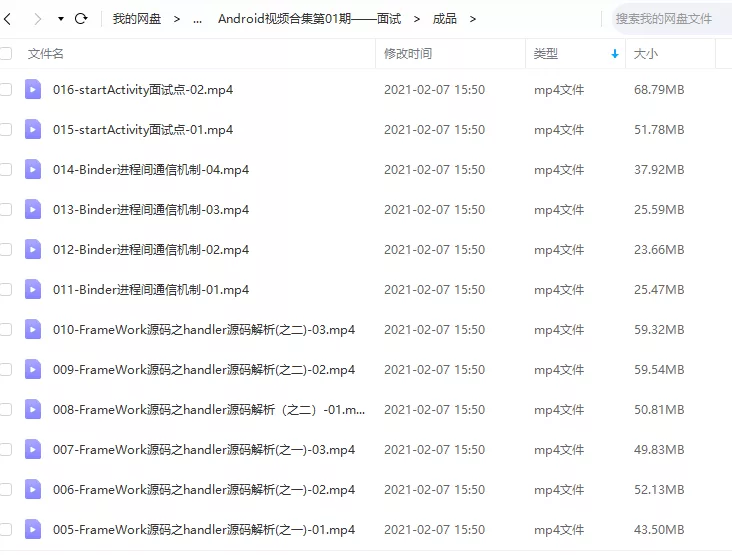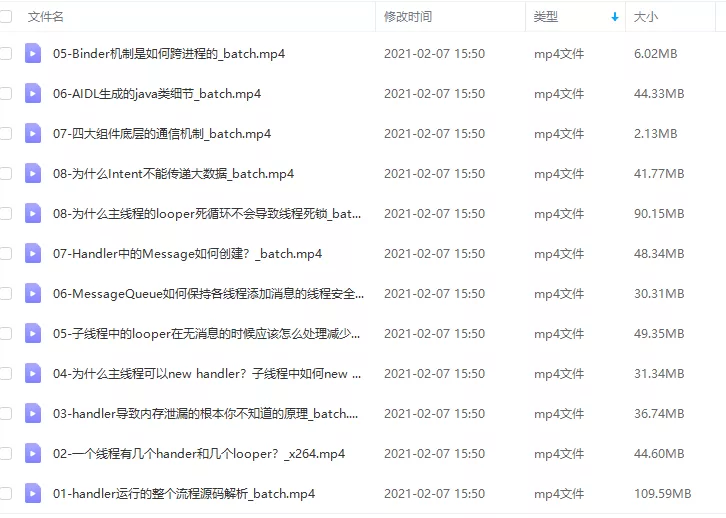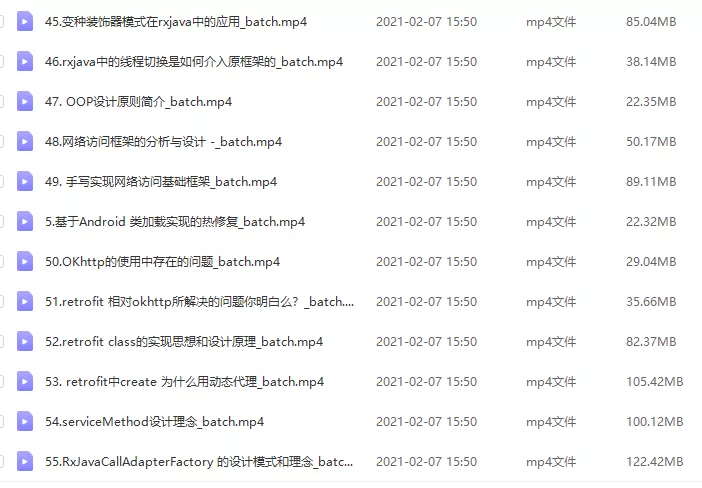StateFlow和SharedFlow都是kotlin中的数据流,官方概念简介如下:
StateFlow:一个状态容器式可观察数据流,可以向其收集器发出当前状态和新状态。是热数据流。
SharedFlow:StateFlow是StateFlow的可配置性极高的泛化数据流(StateFlow继承于SharedFlow)
对于两者的基本使用以及区别,此处不做详解,可以参考官方文档。本文会给出一些关于如何在业务中选择选择合适热流(hot flow)的建议,以及单元测试代码。
StateFlow的一般用法如下图所示:

以读取数据库数据为例,Repository负责从数据库读取相应数据并返回一个flow,在ViewModel收集这个flow中的数据并更新状态(StateFlow),在MVVM模型中,ViewModel中暴露出来的StateFlow应该是UI层中唯一的可信数据来源,注意是唯一,这点跟使用LiveData的时候不同。
我们应该在ViewModel中暴露出热流(StateFlow或者SharedFlow)而不是冷流(Flow)
如果我们如果暴露出的是普通的冷流,会导致每次有新的流收集者时就会触发一次emit,造成资源浪费。所以如果Repository提供的只有简单的冷流怎么办?很简单,将之转换成热流就好了!通常可以采用以下两种方式:
1、还是正常收集冷流,收集到一个数据就往另外构建的StateFlow或SharedFlow发送
2、使用stateIn或shareIn拓展函数转换成热流
既然官方给我们提供了拓展函数,那肯定是直接使用这个方案最好,使用方式如下:
private const val DEFAULT_TIMEOUT = 500L
@HiltViewModel
class MyViewModel @Inject constructor(
userRepository: UserRepository
): ViewModel() {
val userFlow: StateFlow<UiState> = userRepository
.getUsers()
.asResult() // 此处返回Flow<Result<User>>
.map { result ->
when(result) {
is Result.Loading -> UiState.Loading
is Result.Success -> UiState.Success(result.data)
is Result.Error -> UiState.Error(result.exception)
}
}
.stateIn(
scope = viewModelScope,
initialValue = UiState.Loading,
started = SharingStarted.WhileSubscribed(DEFAULT_TIMEOUT)
)
// started参数保证了当配置改变时不会重新触发订阅
}
在一些业务复杂的页面,比如首页,通常会有多个数据来源,也就有多个flow,为了保证单一可靠数据源原则,我们可以使用combine函数将多个flow组成一个flow,然后再使用stateIn函数转换成StateFlow。
shareIn拓展函数使用方式也是类似的,只不过没有初始值initialValue参数,此处不做赘述。
这两者如何选择?
上文说到,我们应该在ViewModel中暴露出热流,现在我们有两个热流-StateFlow和SharedFlow,如何选择?
没什么特定的规则,选择的时候只需要想一下一下问题:
1.我真的需要在特定的时间、位置获取Flow的最新状态吗?
如果不需要,那考虑SharedFlow,比如常用的事件通知功能。
2.我需要重复发射和收集同样的值吗?
如果需要,那考虑SharedFlow,因为StateFlow会忽略连续两次重复的值。
3.当有新的订阅者订阅的时候,我需要发射最近的多个值吗?
如果需要,那考虑SharedFlow,可以配置replay参数。
compose中收集流的方式
关于在UI层收集ViewModel层的热流方式,官方文档已经有介绍,但是没有补充在JetPack Compose中的收集流方式,下面补充一下。
先添加依赖implementation 'androidx.lifecycle:lifecycle-runtime-compose:2.6.0-alpha03'
// 收集StateFlow
val uiState by viewModel.userFlow.collectAsStateWithLifecycle()
// 收集SharedFlow,区别在于需要赋初始值
val uiState by viewModel.userFlow.collectAsStateWithLifecycle(
initialValue = UiState.Loading
)
when(uiState) {
is UiState.Loading -> TODO()
is UiState.Success -> TODO()
is UiState.Error -> TODO()
}
使用collectAsStateWithLifecycle()也是可以保证流的收集操作之发生在应用位于前台的时候,避免造成资源浪费。
单元测试
由于我们会在ViewModel中使用到viewModelScope,首先可以定义一个MainDispatcherRule,用于设置MainDispatcher。
import kotlinx.coroutines.Dispatchers
import kotlinx.coroutines.test.TestDispatcher
import kotlinx.coroutines.test.UnconfinedTestDispatcher
import kotlinx.coroutines.test.resetMain
import kotlinx.coroutines.test.setMain
import org.junit.rules.TestRule
import org.junit.rules.TestWatcher
import org.junit.runner.Description
/**
* A JUnit [TestRule] that sets the Main dispatcher to [testDispatcher]
* for the duration of the test.
*/
class MainDispatcherRule(
val testDispatcher: TestDispatcher = UnconfinedTestDispatcher()
) : TestWatcher() {
override fun starting(description: Description) {
super.starting(description)
Dispatchers.setMain(testDispatcher)
}
override fun finished(description: Description) {
super.finished(description)
Dispatchers.resetMain()
}
}
将MainDispatcherRule用于ViewModel单元测试代码中:
class MyViewModelTest {
@get:Rule
val mainDispatcherRule = MainDispatcherRule()
...
}
1.测试StateFlow
现在我们有一个业务ViewModel如下:
@HiltViewModel
class MyViewModel @Inject constructor(
private val userRepository: UserRepository
) : ViewModel() {
private val _userFlow = MutableStateFlow<UiState>(UiState.Loading)
val userFlow: StateFlow<UiState> = _userFlow.asStateFlow()
fun onRefresh() {
viewModelScope.launch {
userRepository
.getUsers().asResult()
.collect { result ->
_userFlow.update {
when (result) {
is Result.Loading -> UiState.Loading
is Result.Success -> UiState.Success(result.data)
is Result.Error -> UiState.Error(result.exception)
}
}
}
}
}
}
单元测试代码如下:
class MyViewModelTest{
@get:Rule
val mainDispatcherRule = MainDispatcherRule()
// arrange
private val repository = TestUserRepository()
@OptIn(ExperimentalCoroutinesApi::class)
@Test
fun `when initialized, repository emits loading and data`() = runTest {
// arrange
val viewModel = MyViewModel(repository)
val users = listOf(...)
// 初始值应该是UiState.Loading,因为stateFlow可以直接获取最新值,此处直接做断言
assertEquals(UiState.Loading, viewModel.userFlow.value)
// action
repository.sendUsers(users)
viewModel.onRefresh()
//check
assertEquals(UiState.Success(users), viewModel.userFlow.value)
}
}
// Mock UserRepository
class TestUserRepository : UserRepository {
/**
* The backing hot flow for the list of users for testing.
*/
private val usersFlow =
MutableSharedFlow<List<User>>(replay = 1, onBufferOverflow = BufferOverflow.DROP_OLDEST)
override fun getUsers(): Flow<List<User>> {
return usersFlow
}
/**
* A test-only API to allow controlling the list of users from tests.
*/
suspend fun sendUsers(users: List<User>) {
usersFlow.emit(users)
}
}
如果ViewModel中使用的是stateIn拓展函数:
@OptIn(ExperimentalCoroutinesApi::class)
@Test
fun `when initialized, repository emits loading and data`() = runTest {
//arrange
val viewModel = MainWithStateinViewModel(repository)
val users = listOf(...)
//action
// 因为此时collect操作并不是在ViewModel中,我们需要在测试代码中执行collect
val collectJob = launch(UnconfinedTestDispatcher(testScheduler)) {
viewModel.userFlow.collect()
}
//check
assertEquals(UiState.Loading, viewModel.userFlow.value)
//action
repository.sendUsers(users)
//check
assertEquals(UiState.Success(users), viewModel.userFlow.value)
collectJob.cancel()
}
2.测试SharedFlow
测试SharedFlow可以使用一个开源库Turbine,Turbine是一个用于测试Flow的小型开源库。
测试使用sharedIn拓展函数的SharedFlow:
@OptIn(ExperimentalCoroutinesApi::class)
@Test
fun `when initialized, repository emits loading and data`() = runTest {
val viewModel = MainWithShareInViewModel(repository)
val users = listOf(...)
repository.sendUsers(users)
viewModel.userFlow.test {
val firstItem = awaitItem()
assertEquals(UiState.Loading, firstItem)
val secondItem = awaitItem()
assertEquals(UiState.Success(users), secondItem)
}
}
作者:linversion
链接:https://juejin.cn/post/7189176023362043965
最后
如果想要成为架构师或想突破20~30K薪资范畴,那就不要局限在编码,业务,要会选型、扩展,提升编程思维。此外,良好的职业规划也很重要,学习的习惯很重要,但是最重要的还是要能持之以恒,任何不能坚持落实的计划都是空谈。
如果你没有方向,这里给大家分享一套由阿里高级架构师编写的《Android八大模块进阶笔记》,帮大家将杂乱、零散、碎片化的知识进行体系化的整理,让大家系统而高效地掌握Android开发的各个知识点。

相对于我们平时看的碎片化内容,这份笔记的知识点更系统化,更容易理解和记忆,是严格按照知识体系编排的。
全套视频资料:
一、面试合集

二、源码解析合集

三、开源框架合集

欢迎大家一键三连支持,若需要文中资料,直接点击文末CSDN官方认证微信卡片免费领取↓↓↓
最后
以上就是单纯哑铃最近收集整理的关于ViewModel中的StateFlow和SharedFlow,使用建议以及单元测试的全部内容,更多相关ViewModel中内容请搜索靠谱客的其他文章。








发表评论 取消回复